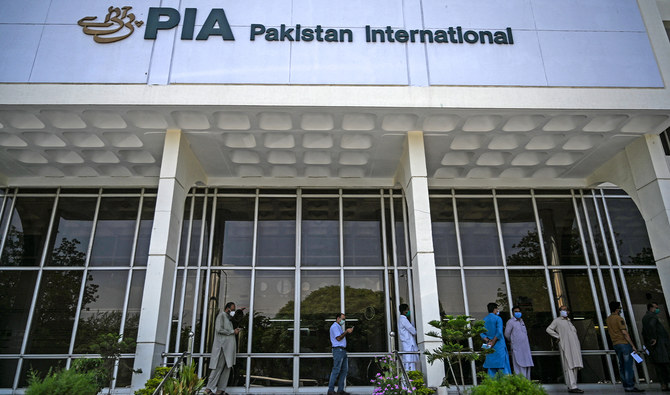ISLAMABAD: Indian dam releases and heavy monsoon rains have raised the risk of major flooding in Pakistan’s eastern Punjab province, where at least 33 people have died and 2 million have been displaced since last week, officials said on Monday.
Punjab, Pakistan’s most populous province and the country’s agricultural heartland, has been inundated by abnormally high monsoon downpours compounded by excess water flowing in from neighboring India. Nationwide, the seasonal rains and floods have killed 854 people since June 26.
“All relevant departments are on alert due to water being released into the Chenab by India,” Irfan Ali Kathia, director general of the Provincial Disaster Management Authority (PDMA) Punjab, told reporters. “Punjab is monitoring the situation in the rivers round the clock.”
Kathia said the province was mounting the “largest rescue and relief operation” in its history, with food and basic necessities being provided to displaced families.
Punjab Relief Commissioner Nabeel Javed said 506 relief and 352 medical camps had been established in affected areas. More than 17,000 people have received health care, he added, while over 500,000 head of livestock had been shifted to safer locations.
Kathia said a flood wave in the Chenab was moving toward Trimmu Headworks, with flows expected to rise from 479,000 to 700,000 cusecs by Monday evening.
He warned of an “extremely high flood level” at Balloki on the Ravi river, where flows had already surged to 168,000 cusecs. The Sutlej was flowing at 253,000 cusecs, while at Panjnad, the confluence of Punjab’s five rivers, water levels were expected to reach around one million cusecs between Sept. 2–3.
Separately, Pakistan’s commissioner for Indus Waters circulated a letter to government departments citing an Indian High Commission warning of possible “high flood” levels at Harike and Ferozepur on the Sutlej.
India routinely releases excess water from its reservoirs when they reach capacity, under arrangements governed by the Indus Waters Treaty.
CLIMATE EMERGENCY
Pakistan, ranked among the world’s most climate-vulnerable countries, has experienced increasingly frequent and erratic weather events in recent years, including heat waves, untimely rains, cyclones and droughts.
Lt. Gen. Inam Haider Malik, chairman of the National Disaster Management Authority (NDMA), said Sunday that Pakistan was in a state of climate emergency, with “major natural hazards hitting every two months” and now posing a grave national security threat.
“After every two months, Pakistan is facing a big disaster … and unfortunately this is a part of reality,” Malik told reporters, warning that climate change would intensify in coming years and calling it a “national security” issue for the country.
The current flooding has revived memories of the catastrophic 2022 deluge, when a third of Pakistan was submerged, more than 1,700 people were killed, 30 million displaced and damages estimated at $35 billion.
















